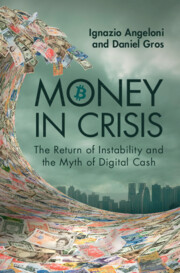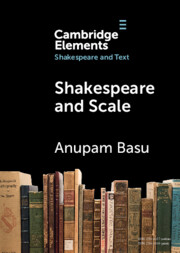Refine search
Actions for selected content:
123 results

Basic Electronics for Scientists and Engineers
- Coming soon
-
- Expected online publication date:
- December 2025
- Print publication:
- 20 November 2025
-
- Textbook
- Export citation
21 - Multiculturalism and Muslim Writing after Brexit
- from Part IV - Pathways and Legacies: 1945–2020
-
-
- Book:
- The Cambridge Companion to British Literature and Empire
- Published online:
- 20 November 2025
- Print publication:
- 04 December 2025, pp 307-320
-
- Chapter
- Export citation
Chapter 16 - Digital Africas
- from Part III - Contemporary Reconfigurations or Shifting Globalities and Positionalities
-
-
- Book:
- African Literature in Transition
- Published online:
- 07 November 2025
- Print publication:
- 20 November 2025, pp 291-308
-
- Chapter
- Export citation
Chapter 17 - Benefits and Risks of the Digital World
-
-
- Book:
- Seminars in Child and Adolescent Psychiatry
- Published online:
- 10 October 2025
- Print publication:
- 30 October 2025, pp 264-277
-
- Chapter
-
- You have access
- HTML
- Export citation
Digital GaN-based transceiver architectures for sustainable 5G networks
-
- Journal:
- International Journal of Microwave and Wireless Technologies , First View
- Published online by Cambridge University Press:
- 30 October 2025, pp. 1-9
-
- Article
-
- You have access
- Open access
- HTML
- Export citation
Development and validation of the TabCAT-EXAMINER: A tablet-based executive functioning battery for research and clinical trials
-
- Journal:
- Journal of the International Neuropsychological Society / Volume 31 / Issue 3 / March 2025
- Published online by Cambridge University Press:
- 30 October 2025, pp. 242-253
-
- Article
- Export citation
Chapter 34 - Michael Field in the Digital Age
- from Part V - Afterlives and Future Fields
-
-
- Book:
- Michael Field in Context
- Published online:
- 03 October 2025
- Print publication:
- 25 September 2025, pp 324-332
-
- Chapter
- Export citation
Digital health and Buddhist network philosophy
-
- Journal:
- BJPsych Bulletin , FirstView
- Published online by Cambridge University Press:
- 11 September 2025, pp. 1-5
-
- Article
-
- You have access
- Open access
- HTML
- Export citation
Analysing celebrity and influencer marketing of food and beverages to adolescents on Instagram
-
- Journal:
- Public Health Nutrition / Volume 28 / Issue 1 / 2025
- Published online by Cambridge University Press:
- 27 August 2025, e144
-
- Article
-
- You have access
- Open access
- HTML
- Export citation
The usability and reliability of a smartphone application for monitoring future dementia risk in ageing UK adults: commentary, Vassilev et al
-
- Journal:
- The British Journal of Psychiatry / Volume 227 / Issue 4 / October 2025
- Published online by Cambridge University Press:
- 20 August 2025, pp. 732-733
- Print publication:
- October 2025
-
- Article
- Export citation
Chapter 25 - The Technological Dimension
- from Part IV - Creative Engagements beyond Music
-
-
- Book:
- Boulez in Context
- Published online:
- 08 July 2025
- Print publication:
- 24 July 2025, pp 262-272
-
- Chapter
- Export citation
African Studies Keyword: Human
-
- Journal:
- African Studies Review / Volume 68 / Issue 2 / June 2025
- Published online by Cambridge University Press:
- 18 July 2025, pp. 338-359
-
- Article
-
- You have access
- Open access
- HTML
- Export citation

Money In Crisis
- The Return of Instability and the Myth of Digital Cash
-
- Published online:
- 15 July 2025
- Print publication:
- 12 June 2025
Chapter 13 - Cyberspace (S)exiles
- from Part III - Emerging Media
-
-
- Book:
- Latinx Literature in Transition, 1992–2020
- Published online:
- 19 June 2025
- Print publication:
- 03 July 2025, pp 240-257
-
- Chapter
- Export citation
Preface
-
- Book:
- Money In Crisis
- Published online:
- 15 July 2025
- Print publication:
- 12 June 2025, pp ix-xii
-
- Chapter
- Export citation
Digitised Sources, Materiality and ‘Interim Archives’: Archive Encounters in Asia and the United Kingdom
- Part of
-
- Journal:
- Transactions of the Royal Historical Society / Volume 3 / December 2025
- Published online by Cambridge University Press:
- 25 April 2025, pp. 363-375
- Print publication:
- December 2025
-
- Article
-
- You have access
- Open access
- HTML
- Export citation

Shakespeare and Scale
- The Archive of Early Printed English
-
- Published online:
- 31 March 2025
- Print publication:
- 24 April 2025
-
- Element
- Export citation
9 - Conclusion
- from Part III - Liberalisation and Welfare in a Multi-level Democracy
-
- Book:
- Making India Work
- Published online:
- 13 February 2025
- Print publication:
- 13 February 2025, pp 193-211
-
- Chapter
- Export citation
The Revolution Must Be Published: Toward a Radically Inclusive Publishing Ecology
- Part of
-
- Journal:
- Public Humanities / Volume 1 / 2025
- Published online by Cambridge University Press:
- 10 February 2025, e47
-
- Article
-
- You have access
- Open access
- HTML
- Export citation
Paper in the Age of the Digital: The Curious Case of 65-B Certificates in India
-
- Journal:
- Asian Journal of Law and Society / Volume 11 / Issue 4 / December 2024
- Published online by Cambridge University Press:
- 09 January 2025, pp. 435-452
-
- Article
-
- You have access
- Open access
- HTML
- Export citation
